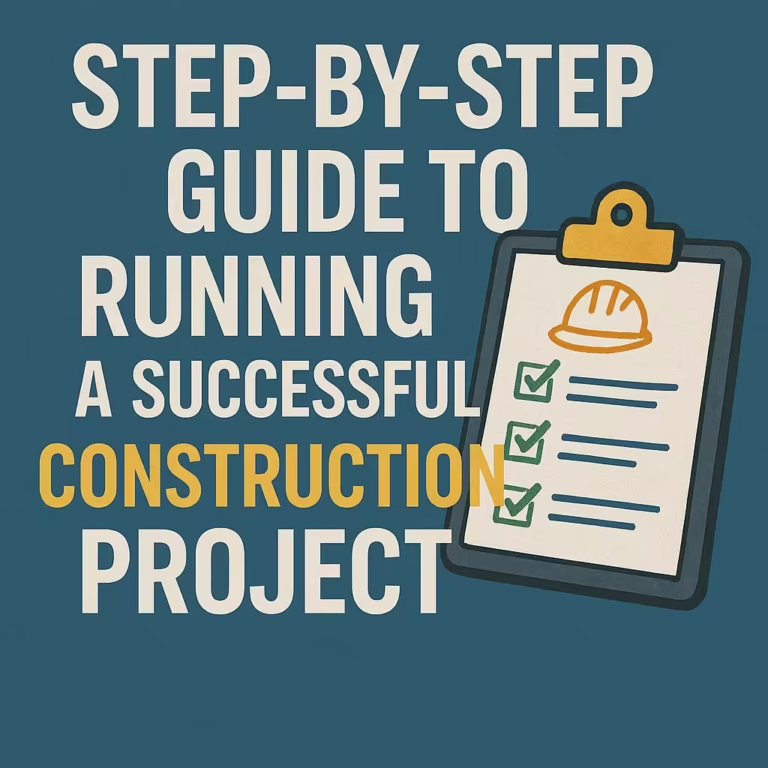Commercial Construction Careers in Under 10 Minutes
Why I Love Talking About These Roles
Okay, so I’m super excited about this Blog. I love these positions, most of these positions, we have books for which we will link you to in the description below, and we have Miro boards which provide content for these positions. I love this topic, so let’s go ahead and go and let’s start with project manager, or construction manager.
Regional Differences in Job Titles
By the way, these positions are mainly in the United States, when you talk about Europe and other locations, they’ll change the term project manager for typically something like a site manager, Superintendent could also be a site manager, and then other positions are typically listed as format. So if you’re international and you’re like, What is a project manager or superintendent? I’m used to the term site manager.
Project Manager Role Explained
The project manager runs the office on the project site and the overall project, and the superintendent runs the field. So let’s talk about these right now, the project manager. So the project manager will not only run the project from pre construction and warranty, but will oversee all office operations. The key is getting the team what they need. So we’re talking about the contractors, the contracts, the materials, the tools, the equipment and the information to go do the job and to fund everybody in doing it. That is the project manager’s job, to make sure that we get everybody what they need.
Superintendent Responsibilities
The superintendent. The superintendent’s job is to run the project in the field and to take the contracts and the trade partners and the tools and the materials and the equipment and the information, and to orchestrate that in a time beat on a rhythm in the field, to make sure that the work is getting done on schedule. So long term planning, seeing the future, visual mapping of the zones and the logistics. These are the things that the superintendent does, in addition to leading the trade partners, leading the craft and leading the field engineers on site, and every construction company should have field engineers.
Estimator: Budget and Pre-Construction
The estimator, you knew it. We were going to talk about the estimator. The estimators, aside from being cool and most of the time introverted, they literally work with the trade partners on creating the estimate and the budgets, whether it’s a control estimate, self perform or trade estimates and putting together the overall project budget to make sure that we are meeting budget on the project site.
Architect: Design and Functionality
Number five, the architect. You knew it. We’re going to talk about the architect. They are different than the engineers. The Architect is responsible for looping in all of the design esthetics, the functionality of the building, the structure and the ability to erect it, constructability, and all of the codes and regulatory compliance into a design that the owner loves, serves the purpose of the end user and can be built for the overall budget and within the timeline. So really, really complex job, the architect will typically run lead on the entire design and hire engineers…
Engineers: Structural, Mechanical, and More
…engineers like the structural engineer, mechanical engineer, electrical engineer. There’s all kinds of engineers. Those engineers get into the details of the engineering for the systems themselves, and then the architecture will bring it all together, obviously. And so they all play a key part in putting together the design of the building.
Civil Engineer’s Critical Role
The civil engineer is absolutely crucial, because the civil engineer is going to make sure that you have your site plan, that you have your utilities, that we are feeding the building, and that we have the esthetics that support the buildings themselves. Having a good civil engineer is absolutely crucial.
Assistant Superintendents and PMs
Now let’s talk about assistant supers and assistant PMS. You know about the Super in the pm the Assistant Superintendent will cover different functional areas for the building in the field, just like assistant PMS will cover different functional areas from a project management standpoint in the office.
Project Engineer: Trade Partner Coordination
What about the project engineer? Well, this differs sometimes, like if you’re going from a Hensel Phelps to like a turner to like, you know, a Mortenson, right? But generally in the industry, project engineer is the person supporting the PM, mainly responsible. Oh, this is so good for getting trades scoped, contracted, prepared into a pre construction meeting, or a preparatory meeting…
Project Engineer Tools & Processes
…whatever you want to call it, with their first in place, inspection, follow up, inspections, and then final close out, getting scopes through that trade partner preparation process is the responsibility of the project engineer, and he or she will do that by using tools. And the tools are RFIs, submittals, subcontractor pay applications, the overall pay applications, budgets and things like that. Those are all tools, but the goal is to get trades queued up in support of the project manager.
Field Engineer: Safety, Quality, and Layout
Now, what about the field engineer? Field engineer? Fantastic position. Field engineers do the front line safety, the front line quality, in addition to survey and control, layout and control and lift drawings to an. Enable the crews.
Foreman: On-Site Execution Leader
So I’m going to talk about foreman, then I’ll come back to field engineer. The foreman is the senior, most capable worker on the crew, and leads the work of the crew. Okay? They execute the work. They are the subject matter experts. They plan and execute the work with their crew.
Field Engineer & Foreman Collaboration
Field engineers enable foreman, right? So field engineers do lift drawings for the foreman, they do surveying control for the foreman, or out ahead of the foreman, safety and quality ahead of the foreman, so the foreman and crews can do their best work. It’s phenomenal.
Surveyor: Control and Layout Expert
Let’s talk about surveyor now. Surveyor, as you already know, they will be responsible for the primary control around the site, the secondary control that goes around the buildings and the working control for the components on the project site. They will stake out site and civil they will provide grid lines…
Surveyor’s Legal Responsibilities
…They do anything that is required when it comes to layout and control on the project site, especially when you need a licensed surveyor with their stamp that is legally responsible for the work.
Safety Manager: Support and Oversight
And I would also like to mention two other positions, the safety manager or the safety engineer. They are there to support the team, especially on large commercial construction projects. They are not there to just delegate everything to and for the team to throw out their hands and say, Hey, that person’s got safety…
Safety is a Team Effort
…they’re there as an aid for the main safety professionals, which are the project management team on site with the format.
VDC: Virtual Design and Construction
Let’s talk about VDC. I love Virtual Design and Construction positions. They will help the project team to do anything that is needed to virtually design and construct the building, so that we have the coordination done, the information we need, and that we have the visuals that are needed to go ahead and build the project, whether it’s pre fabricated or stick built.
Executive Roles: Project Director and GS
So these are the positions that we mainly have in construction. Let me mention just a couple more. Project executive or project director is in charge of the overall project, and the General Superintendent will be in charge of massive projects or multiple projects, to hold the project superintendents accountable and make sure that we are operationally excellent…
Recap of Key Responsibilities
…so project director and GS, responsible for the overall project and the client, the PM, getting everybody what they need, the super running things in the field, the assistants, making sure that they are governing overall functional areas that are divided as a part of the overall project. Project Engineer getting trades through the trade partner preparation process, field engineers, preparing any field aspect for the trades. Surveyors, giving us layout, VDC, giving us anything virtually that we need to prepare and plan the project. The estimators, making sure that we have it all for a fixed or reasonable cost.
Final Thoughts
So that’s the field positions in under 10 minutes. I hope you’ve enjoyed that. I’ll give that to you in a blog post, and we’ll link you to our cool content, our books and our Miro boards. I hope you’ve enjoyed this. On we go.






